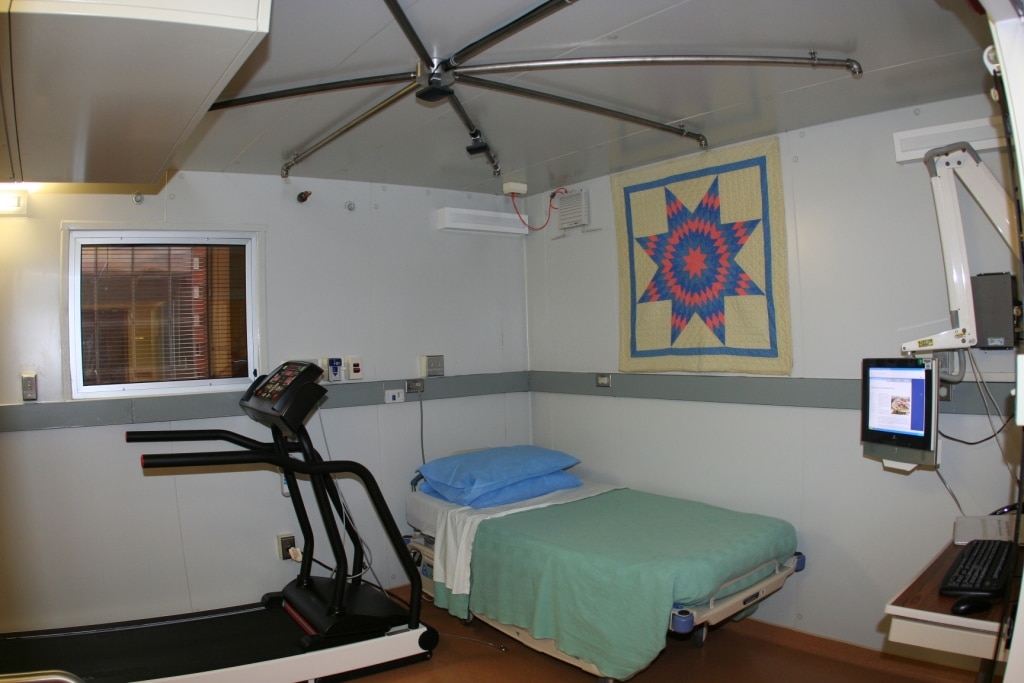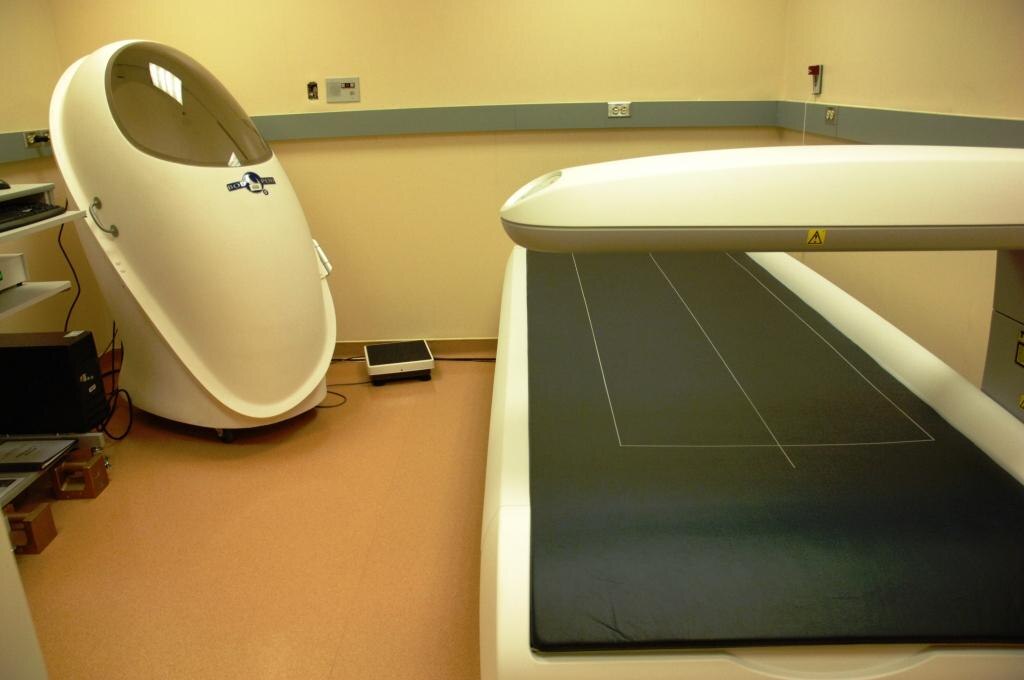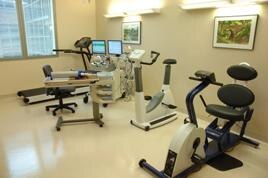Metabolic Testing
The NIDDK Human Energy and Body Weight Regulation Core provides metabolic testing for the Metabolic Clinical Research Unit (MCRU). Tests include:
Energy Metabolism
Metabolism is the process of generating energy from nutrients. For essential functions of our body such as maintaining temperature, breathing, circulation, and chemical balances, calories are taken from the foods we eat and energy we store as fat. As we do activities throughout the day, such as walking, climbing stairs, household tasks or exercising, we use more energy. There are different ways to measure the energy we use.

Research Techniques
- Whole-Room Respiratory Suites - This instrument is designed to accurately measure energy expenditure during sleep, rest, meals, exercise, and other conditions. It continuously measures the oxygen you inhale and the carbon dioxide you exhale (indirect calorimetry).
- Metabolic Carts - A metabolic cart is used to precisely measure the oxygen you inhale and the carbon dioxide you exhale during rest, after meals, and during certain exercises.
- Doubly-Labeled Water - Participants are given special water where some of the hydrogen and oxygen atoms are replaced with non-radioactive and non-toxic isotopes. The concentrations of the isotopes are measured over time by sampling saliva, urine, or blood. This determines a participant’s energy metabolism.
Body Composition
Every person is composed of bone, muscle, organs, water, and fat. The study of body composition looks at an individual’s percentage of lean mass (bone, muscle, organs, and water) and fat. Some fat is necessary for overall health because it plays an important role in protecting internal organs, provides energy, and regulates the hormones that perform various functions in body regulation. Excess fat, however, has been linked to a number of health problems such as an increased risk of cancer, diabetes, and heart disease. Body composition tests help us develop personalized nutrition and exercise programs.

Research Techniques
- DXA (dual-energy x-ray absorptiometry) Scan - This is a medical imaging scanner, similar to an x-ray, that uses very low dose x-rays to obtain detailed images of the bones, lean body mass, and body fat of participants. In this test, participants lay flat on a raised, padded bed while a scanning arm moves slowly over them.
- BodPod - This is used to provide a whole-body measurement of body volume. Together with weight, this is used to determine the overall lean and fat mass in a participant. In this test, participants sit inside a capsule, while computerized pressure sensors determine the amount of air displaced by their body.
- Bioelectrical Impedance - This test is based on the idea that lean tissue allows electrical current to pass through it more easily than fat tissue, because it has higher water content. To determine a participant’s body fat mass and total body water content, we place electrodes on the participant’s hand and foot and send a low dose electrical current through their body. This current is so small that most participants cannot feel anything.
- Three-Dimensional Laser Body Scanner (BSA) – This test uses high resolution laser cameras to map the body surface area in just a few short seconds. The process uses a projected laser line and a camera looking at the laser line from different angles. Participants will stand still on a platform for approximately 30 seconds while the cameras scan and perform measurements on circumferences and body surface area. The scan is safe, quick, and precise.
Fitness Testing
Exercise testing provides diagnostic and research measurements on an individual's capacity and cardiorespiratory responses during and after dynamic exercises.

Research Techniques
- Exercise Testing Lab - We measure a participant’s oxygen consumption, carbon dioxide production, respiration rate, blood pressure, and EKG during standardized and specialized exercise testing protocols on treadmills or stationary bicycles (upright and recumbent ergometers).
Portable Monitoring
Laboratory conditions do not always represent free-living environments for study participants. We use a wide variety of wearable monitors to measure movement, body temperature, heart rate, and other physiological responses over longer periods of time.
Research Techniques
- Accelerometers - We measure detailed movements by small and wearable accelerometers to quantify sleep patterns and general quality, physical activity levels and sedentary behavior, and exercise adherence to designed protocols.
- Holter EKG and heart rate monitors - We measure continuous EKG signals (up-to 12 leads) over 24-48 hours to analyze heart rate, heart rate variability, and other heart patterns.
- Temperature sensors - We measure continuous body temperatures using ingestible pills (for core temperature) and iButtons (for skin temperature) over 24-48 hours.
Metabolic and Isotope Fluxes
Oral and/ or intravenous metabolic isotopes are employed to measure turnover of carbohydrate, lipids, proteins, and their metabolites in healthy participants and those with a variety of chronic conditions.

